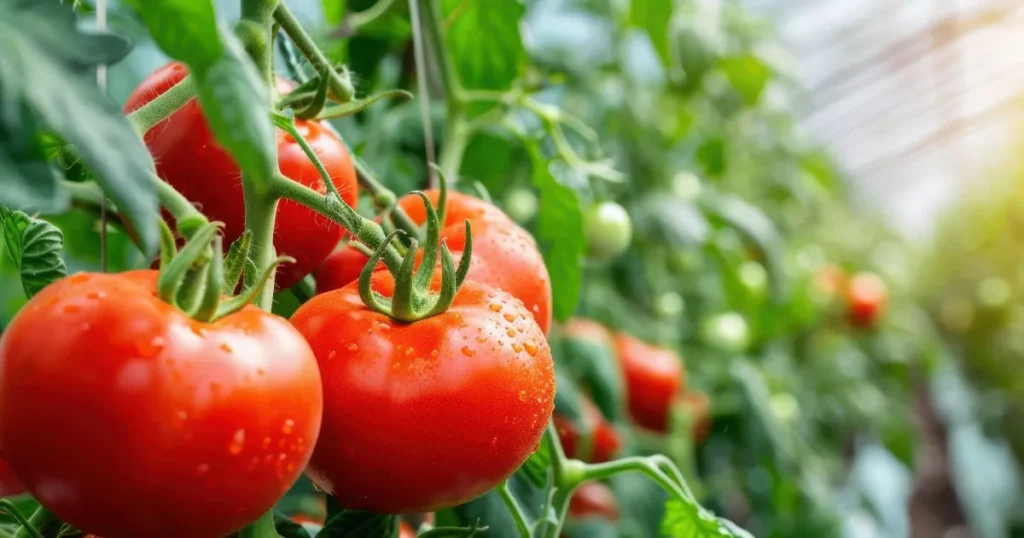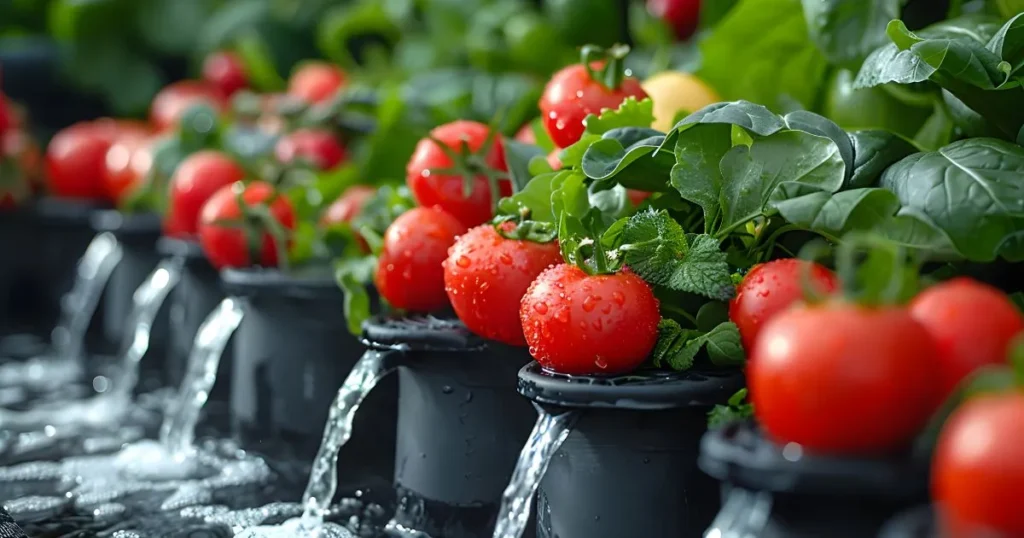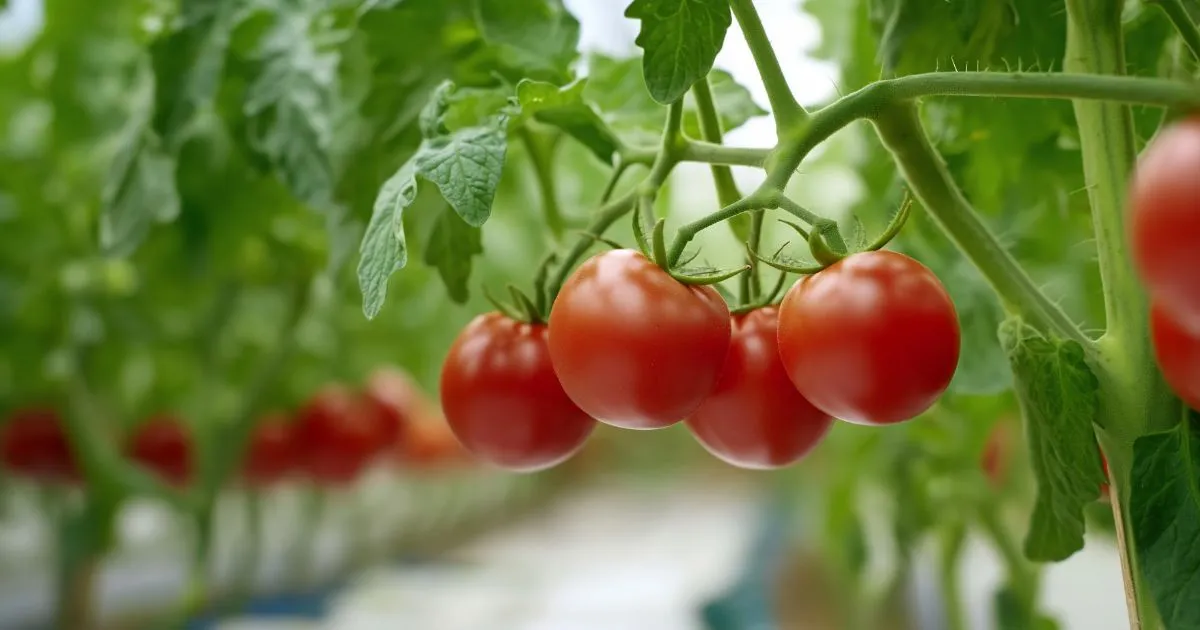Table of Contents
Introduction of Hydroponics and Tomatoes
In modern agriculture, hydroponics is revolutionizing the way we grow plants. One of the most popular crops grown hydroponically is the tomato. Hydroponics offers a variety of benefits compared to traditional soil-based growing methods, including better control over environmental conditions, reduced water usage, and faster plant growth. In this article, we will explore how hydroponics works, why it is an ideal method for growing tomatoes, and how you can achieve maximum yields using this innovative farming technique.
What is Hydroponics?
Understanding the Basics
Hydroponics is a soil-free method of growing plants, where the roots are submerged in a nutrient-rich water solution. The essential minerals and nutrients are delivered directly to the plant, allowing it to thrive without the need for soil. The plants absorb the nutrients they need through the water, which is carefully controlled to ensure proper levels of pH, temperature, and nutrient concentrations. This method mimics the natural process of nutrient uptake from the soil, but with the added benefit of a controlled environment that maximizes plant health and growth.
History of Hydroponics
The origins of hydroponics can be traced back to ancient civilizations. The Hanging Gardens of Babylon, one of the Seven Wonders of the Ancient World, are believed to have been one of the earliest forms of hydroponic gardening. However, it wasn’t until the 20th century that hydroponics began to gain attention as a viable farming method. Scientists and horticulturists began experimenting with soil-less growing techniques, leading to the development of more advanced hydroponic systems in the 1920s and beyond.
Today, hydroponics is a popular choice for urban farming and commercial agriculture, particularly in areas with limited access to fertile land. It allows growers to produce high-quality crops in controlled environments, even in areas with poor soil quality or harsh climates.
Why Tomatoes Thrive in Hydroponic Systems
Tomato Plant Anatomy
Tomatoes are one of the most popular and versatile crops grown hydroponically. The plant’s anatomy is well-suited for hydroponic systems because its root system can efficiently absorb nutrients from water when properly fed. Tomatoes are also relatively low-maintenance, with the ability to adapt well to varying environmental conditions, making them ideal for controlled hydroponic systems.
In a typical soil-based system, tomatoes rely on the nutrients available in the soil. However, with hydroponics, the grower controls exactly what the plant gets, including water, nutrients, and oxygen. This allows for more consistent growth, better fruit production, and fewer chances for disease or pest infestations.
Benefits of Hydroponic Tomatoes
There are numerous reasons why tomatoes thrive in hydroponic systems. Some of the most notable benefits include:
- Faster Growth: Because plants receive all their nutrients directly through the water, they grow faster and more efficiently. This can lead to quicker harvests and multiple growing cycles throughout the year.
- Increased Yield: Hydroponic systems maximize space and nutrients, leading to higher yields compared to traditional soil farming. Tomatoes grown in hydroponic systems often produce more fruit per plant.
- Reduced Risk of Disease: Without the presence of soil, the risk of soil-borne diseases is greatly reduced. Hydroponics can also be used in controlled environments like greenhouses, which further reduces the likelihood of pest infestations.
- Better Control Over Growing Conditions: With hydroponics, the grower has complete control over the pH levels, water temperature, and nutrient concentration. This means tomatoes can be grown in optimal conditions year-round, regardless of external weather conditions.
- Water Conservation: Hydroponics is a more water-efficient method of growing. The water used in hydroponic systems can be recirculated, meaning that much less water is wasted compared to traditional soil farming.

Types of Hydroponic Systems for Tomatoes
There are several different hydroponic systems, each with its unique features and benefits. Below, we explore some of the most common systems used for growing tomatoes.
Nutrient Film Technique (NFT)
The Nutrient Film Technique (NFT) is a popular method for growing hydroponic tomatoes. In this system, a thin film of nutrient solution flows over the plant roots, providing the necessary nutrients. This system is known for being water-efficient and well-suited to growing crops like tomatoes.
In NFT systems, the tomato plants are placed in channels or trays, and the nutrient solution continuously flows through the channels. The roots of the plants remain in constant contact with the solution, ensuring that the plants get the nutrients they need. NFT is ideal for smaller, leafy plants but can also be used for tomatoes with proper modifications.
Deep Water Culture (DWC)
Deep Water Culture (DWC) is another common hydroponic method. In this system, the plant roots are submerged in a nutrient-rich water solution, which is kept oxygenated using air pumps or aerators. The water acts as both the nutrient source and the growing medium.
DWC systems are particularly well-suited for tomatoes because the plants require a consistent supply of nutrients and oxygen. The roots are fully submerged in the solution, allowing for rapid growth and large yields. One potential challenge with DWC is ensuring that the oxygen levels in the water remain high enough for healthy root development.
Drip Irrigation Systems
Drip irrigation is a widely used hydroponic technique that delivers water and nutrients directly to the plant roots using a network of tubes and drippers. This system is especially useful for larger plants like tomatoes, as it allows for precise control over water and nutrient delivery.
In a drip system, the nutrient solution is applied to the base of the plants in small, controlled amounts. This ensures that the plants receive just the right amount of water and nutrients without over-saturating the soil or causing runoff. Drip systems are highly efficient and can be easily adjusted to suit the specific needs of the plants.
Nutrients Essential for Hydroponic Tomatoes
Macronutrients
Tomatoes, like all plants, require a variety of macronutrients to grow properly. The primary macronutrients for tomato plants include nitrogen (N), phosphorus (P), and potassium (K). These nutrients support various stages of plant growth, including leaf development, root formation, and fruit production.
- Nitrogen: Nitrogen is essential for healthy foliage growth and photosynthesis.
- Phosphorus: Phosphorus promotes root development and is crucial during the early stages of plant growth.
- Potassium: Potassium helps regulate water uptake, improves disease resistance, and enhances fruit quality.
In a hydroponic system, these macronutrients are delivered in a balanced ratio to ensure optimal plant health.
Micronutrients
In addition to macronutrients, tomatoes also require several micronutrients in smaller amounts. These include elements such as calcium, magnesium, iron, and manganese, which are necessary for various physiological functions within the plant.
- Calcium: Essential for cell wall structure and fruit development.
- Magnesium: A central component of chlorophyll, crucial for photosynthesis.
- Iron: Important for energy production and chlorophyll synthesis.
Hydroponic systems allow for precise control over the concentration of these nutrients, preventing deficiencies and ensuring the tomatoes grow healthily.
Environmental Factors and Tomato Growth
Light Requirements
Tomatoes require plenty of light for photosynthesis and fruit production. In a hydroponic system, growers often use artificial grow lights to supplement natural sunlight, particularly when growing indoors or in regions with limited sunlight.
The ideal light intensity for tomatoes is around 400-600 µmol/m²/s, and the plants should receive 12-16 hours of light per day. LED grow lights are a popular choice due to their energy efficiency and ability to provide the necessary spectrum of light for plant growth.
Temperature and Humidity Control
Tomatoes prefer a warm environment with temperatures between 70-80°F (21-27°C) during the day and slightly cooler at night. In hydroponic systems, temperature control is easier because the growing environment is often enclosed in a greenhouse or indoor facility. Proper humidity levels are also crucial; too much humidity can lead to fungal diseases, while too little can cause dehydration.

Challenges and Solutions in Hydroponic Tomato Farming
Pest and Disease Management
Although hydroponic systems reduce the risk of soil-borne diseases, pests and fungal infections can still occur. Integrated pest management (IPM) techniques, such as introducing beneficial insects or using organic pest control methods, can help keep crops healthy.
pH and Nutrient Balance
Maintaining the proper pH and nutrient balance is critical for successful hydroponic tomato farming. pH levels should be kept between 5.5 and 6.5, and regular monitoring of nutrient concentrations is essential to prevent nutrient imbalances.
Conclusion
In conclusion, hydroponics is an excellent method for growing tomatoes, offering a sustainable and efficient alternative to traditional farming methods. By providing the right nutrients, environmental conditions, and hydroponic systems, growers can produce high-quality tomatoes with increased yields and fewer environmental challenges. As technology continues to evolve, hydroponic tomato farming will likely become even more accessible and widespread, transforming the way we grow food and helping to meet the global demand for fresh produce.
Frequently Asked Questions (FAQs)
Q1: Can hydroponic tomatoes be grown indoors?
Yes, hydroponic tomatoes can be successfully grown indoors, especially with the use of artificial lighting such as LED grow lights.
Q2: What type of hydroponic system is best for beginners?
The Nutrient Film Technique (NFT) and Deep Water Culture (DWC) are both relatively easy for beginners to set up and maintain, with DWC being particularly popular for tomatoes.
Q3: How often should I check the pH level in a hydroponic tomato system?
It is recommended to check the pH level at least once a week to ensure that it stays within the ideal range of 5.5-6.5 for tomatoes.
Q4: How long does it take to grow tomatoes hydroponically?
Tomatoes grown hydroponically typically take around 60-85 days from seed to harvest, depending on the variety and growing conditions.
Q5: Can hydroponic tomatoes be grown without artificial lighting?
Yes, if you have access to natural sunlight for a significant portion of the day, you can grow hydroponic tomatoes without artificial lighting. However, supplemental lighting can help boost growth during cloudy days or winter months.

